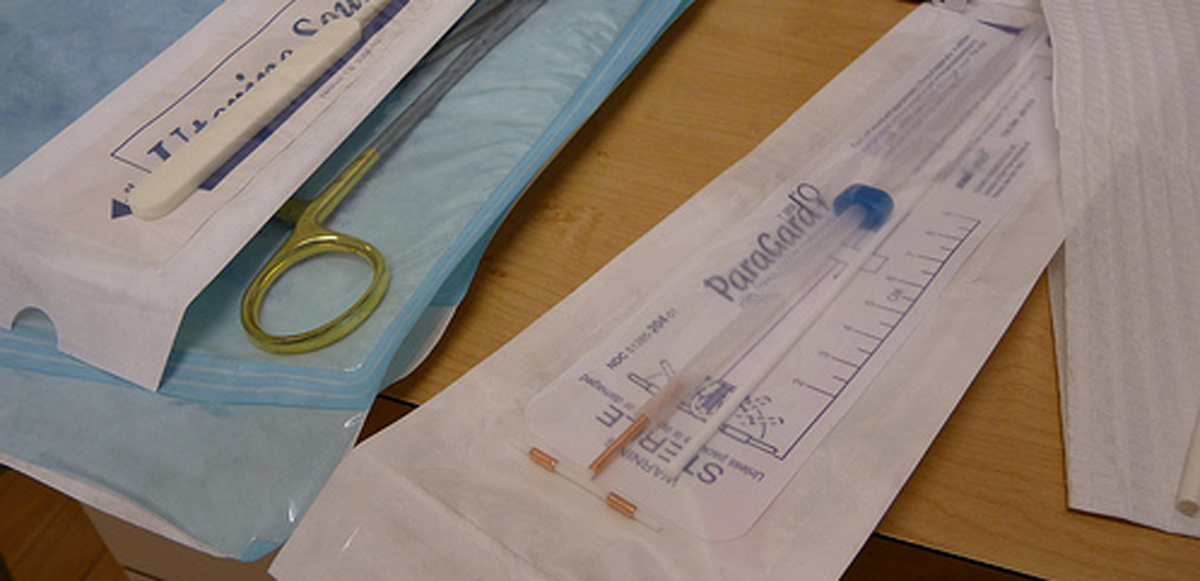The majority of people think that IUDs are associated with cervical cancers. However, contrary to popular belief, IUDs have been found to halve the risk of developing cervical cancer. This conclusion was made by one of the largest epidemiological studies.
Contrary to Popular Belief, IUDs found to Half the Risk of Developing Cervical Cancer
Think of the possible side effects of having an intrauterine contraceptive device implanted, and the majority of people think that they could be associated with cervical cancers. However, contrary to popular belief, IUDs have been found to halve the risk of developing cervical cancer, rather than increasing the risk. This is the conclusion drawn by one of the largest epidemiological studies conducted to date, the results of which were published in “The Lancet Oncology.”
In a study led by Xavier Castellsague of the cancer epidemiological research program at the Llobregat Hospital in Catalonia, the researchers analyzed data from ten case-control studies of cervical cancer done in eight countries, and 16 HPV prevalence surveys in women from 4 continents. The research team found that the use of "coil" contraceptives — technically known as IUDs or intrauterine devices — reduced a woman's risk of developing cervical cancer by half within the first year of its use. More surprisingly, this protective action lasts even after ten years of use of an IUD.
The incidence of both major types of cervical cancers is reduced, the study found. Namely, the chances of developing squamous cell cancer are reduced by 44 percent in women with an IUD, whereas the risk of developing adenocarcinoma or adeno-squamous carcinoma are reduced by 54 percent. Although the likelihood of being infected by the Human Papilloma Virus (HPV), the virus implicated in the pathogenesis of cervical cancer, is not reduced, coil contraceptives slow down the progression of the inflammation caused by HPV into cervical cancer.
Earlier studies had shown the benefit of using coil contraceptives in lowering the risk of endometrial cancer. The protection offered by these handy and user-friendly contraceptive devices against cervical cancer is an added incentive for women who are deciding what type of birth control method may be right for them.
Cervical Cancer is the Second Most Common Cancer Affecting Women
According to the World Health Organization statistics, cervical cancer is the second most common specifically female cancer affecting women. Almost 500,000 new cases of cervical cancer are diagnosed every year, and 250,000 women succumb to cervical cancer annually. A HPV infection is believed to be the cause behind most cases of these cancers. Pharmaceutical companies like Merck and GlaxoSmithKline manufacture vaccines against a HPV infection; and immunization against HPV has been taken up as a nationwide program by many countries. This reduces the risk of cervical cancer greatly, but the contraceptive choices we make matter, too.Read more: The Ten Most Common Cervical Cancer Myths
IUDs are plastic and copper or hormone-containing contraceptive devices which prevent sperm cells from fertilizing eggs in the uterus. Many people earlier believed that these contraceptive coils can cause cervical cancer, likely because they were afraid due to these devices being a "foreign body". However, the new study has brought to light their protective action against cervical cancer.
It is still not very clear exactly how contraceptive coils protect against cancer. According to Castellsague, IUDs act as foreign bodies and stimulate inflammatory changes in the cervix. These changes prevent the HPV infection from progressing further and transforming into cancer. The IUDs possibly induce a low grade, chronic inflammatory response which can alter the immune status of the local mucosa and halt the progression of HPV infection — the same mechanism that causes them to be effective as birth control. There are several other theories regarding their mechanism of action. Hormone releasing coils which release progesterone into the uterus may affect the natural progression of HPV infection. Local trauma caused while inserting the device may induce a small focus of chronic inflammation and provide immunity for a long time. This immunity may clear persistent HPV infections and any pre-invasive lesions in the cervical epithelium.
- “Intrauterine device use, cervical infection with human papilloma virus, and risk of cervical cancer: a pooled analysis of 26 epidemiological studies”, Xavier Castellsague, Mireia Diaz et al, The Lancet Oncology, 2011, accessed on September 22, 2011
- “Coils almost halve risk of cervical cancer: study’, by Kate Kelland, Reuters, published on September 12, 2011, accessed on September 22, 2011
- Photo courtesy of misti_k on Flickr: www.flickr.com/photos/misti_k/4408209527/


Your thoughts on this